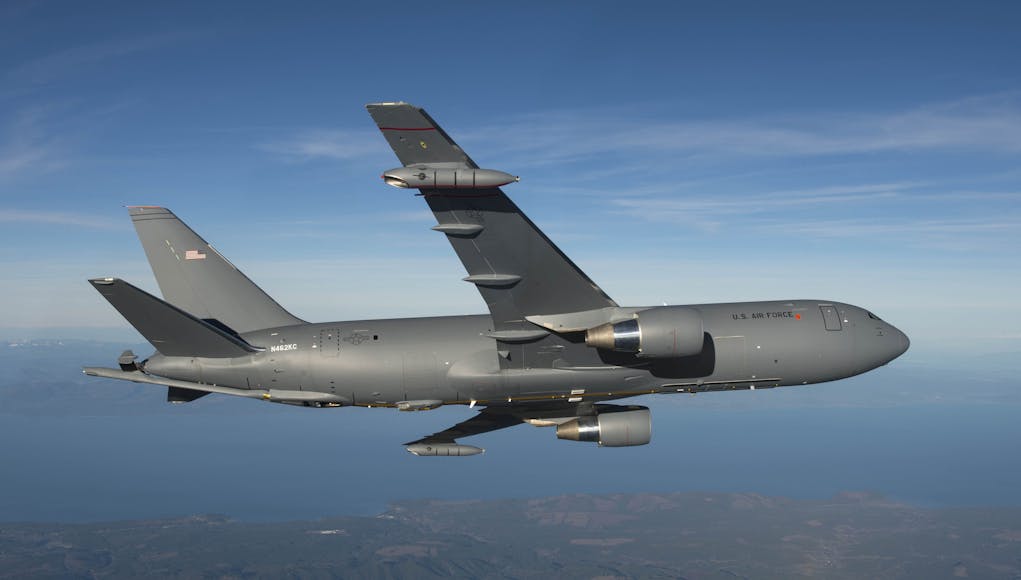The first two Boeing KC-46 Pegasus aircraft departed Everett’s Paine Field last week for McConnell Air Force Base, where the 22nd Air Refueling Wing was the first unit to receive the tankers.
McConnell will receive two more tankers in the weeks ahead. Then Oklahoma’s Altus Air Force Base will receive four planes to support aircrew training.
The US Air Force will soon begin evaluating the KC-46’s systems in operationally realistic scenarios, which is required before the aircraft can be used in combat.
It will also continue validating the KC-46’s refueling capabilities, with aircraft including the B-2 bomber, C-5 cargo plane, and F-35 fighter. Prior testing involved the B-52 bomber, C-17 cargo plane, and F-15E and F/A-18 fighters, among others.
After delays, Boeing had promised that the first KC-46s would be delivered to the USAF this month, however, even as the aircraft was receiving its final FAA certifications, major technological deficiencies with the aircraft remained unresolved.
Then, on September the 17th, it was discovered that deficiencies had been identified.
Background
In 2006, the USAF released a request for proposal for a new tanker programme, KC-X, to be selected by 2007. Boeing had also announced it may enter an even higher capability tanker based on the Boeing 777, named the KC-777 Strategic Tanker.
Airbus partnered with Northrop Grumman to offer the Airbus A330 MRTT, the tanker version of the A330, which was being marketed to the USAF under the company name, KC-30.
In late January 2007 the USAF issued the KC-X Aerial Refueling Aircraft Request for Proposal.
The RFP called for 179 (4 system development and demonstration and 175 production) tankers, in a contract worth an estimated US$40 billion. However, Northrop and EADS expressed their displeasure at how the RFP was structured and threatened to withdraw, leaving only Boeing to offer an aircraft.














PLEASE…… so much much much more to tell in this story….. looking forward to a fuller analysis in the future, thanks.
Depends on the user. the USAF operates over 500 large tankers. USAF officers i’ve spoken to in the past have said the preferred a 737 sized option (which is closer in size to the KC-135s). The A330 would have been overkill and presented basing problems. Now when it comes time to replace the KC-10, maybe something the size of the A330 would be in order…
They both carry two wing refuelling pods and a boom, the Airbus has about 20% more range.
Pegasus can carry 94 tonnes of fuel or ferry 15 aircrew, 24 stretchers and 34 ambulatory medivac passengers, 114 soldiers or 15 standard cargo pallets.
A330 MRTT can carry 111 tonnes of fuel and 48 tonnes of cargo as 8 military pallets and 2 bulk containers or 111 medivac stretchers and attendants or 291 troops
So the answer is if you wanted a pure refuelling craft or standard pallet cargo craft the Pegasus would probably be more efficient. If you wanted a flexible craft that could ferry soldiers, patients or carry military pallets while still performing refuelling then the Airbus would be superior.